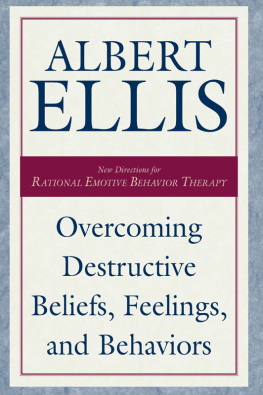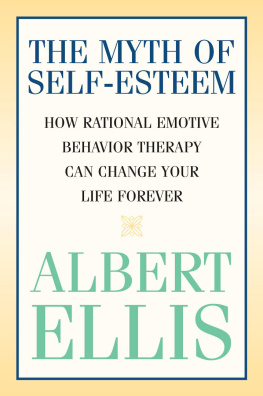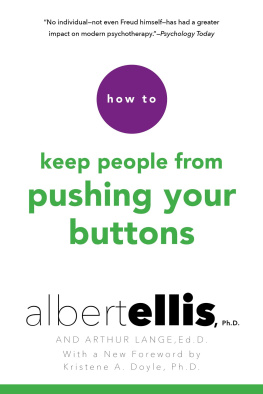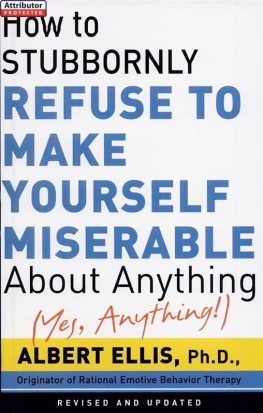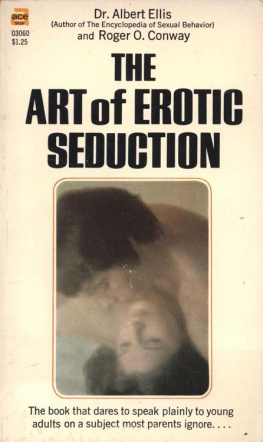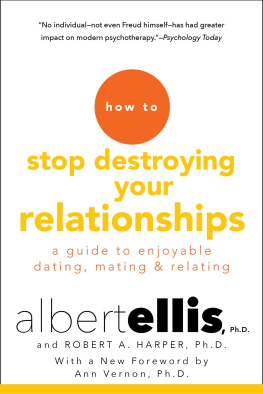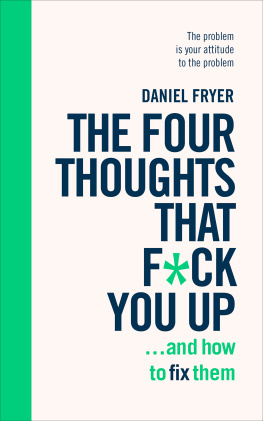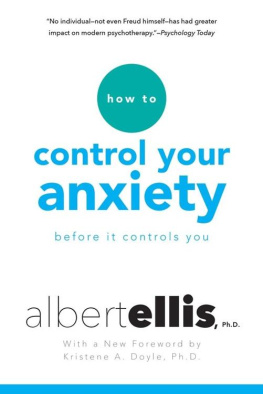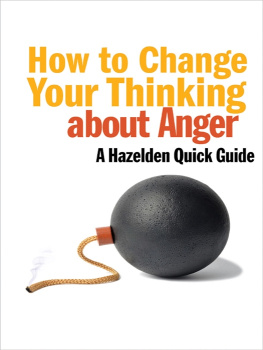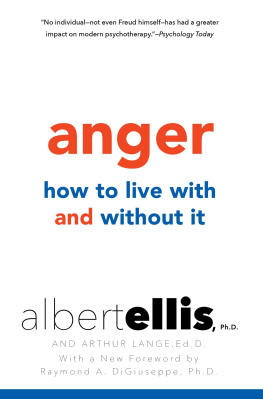Albert Ellis, Ph.D., is the author of more than sixty-five books on psychotherapy, relationship therapy, and self-help books, including Reason and Emotion in Psychotherapy, A Guide to Rational Living, Rational Emotive Behavior Therapy: A Therapist's Guide, How to Control Your Anxiety Before It Controls You, The Albert Ellis Reader, and How to Make Yourself Happy and Remarkably Less Disturbable.
Dr. Ellis has been rated by psychologists and counselors in the United States as one of the most influential psychologists (Carl Rogers came first and Sigmund Freud third) and by Canadian psychologists as number one in importance. He has revolutionized psychotherapy since 1955, when he created Rational Emotive Behavior Therapy (REBT), the first of the now popular cognitive behavior therapies.
Dr. Ellis is president of the Albert Ellis Institute in New York City, where he sees a large number of individual and group therapy clients, leads its psychotherapy training program, conducts research activities, and gives numerous talks and workshops every year, including his regular Friday night workshop where he conducts demonstration interviews with people in public. He is also a widely traveled speaker who gives many professional and public workshops throughout the world.
The goals of psychotherapy are twofold: to help clients disturb themselves less emotionally and to enable them to lead happier and more fulfilling lives. When people seriously disturb themselvesthat is, make themselves severely panicking, depressing, or ragingand when they function poorlythat is, unduly inhibit themselves, withdraw, or act compulsivelythey live less happily. Effective psychotherapy usually first tries to reduce clients disturbing but also teaches them the skills of leading a more fulfilling, self-actualizing existence. Unless they achieve the first of these goals, attaining the second one is, while not impossible, damned difficult!
If therapists focus on the first goal of therapyto help clients minimize their self-disturbingthey may find that helping them is more complicated than it at first appears. As I pointed out in an article in 1972, helping clients to distress themselves less has two important aspects: feeling better and getting better. Feeling better is of course important because clients tend to make themselves feel bad when they function poorly and they tend to function better when they feel better. So their feeling better is almost crucial to successful therapy.
Getting better is even more important. It consists of clients (1) feeling better; (2) continuing to feel better; (3) experiencing fewer disturbing symptoms (e.g., depressing and needlessly inhibiting themselves); (4) making their distressing seldom recur; (5) knowing how to reduce it when they partly cause it; (6) using this knowledge effectively; (7) being less likely to disturb themselves when new adversities occur in their lives; (8) accepting the challenge of making themselves minimally undisturbing, even when unusually aversive events occur.
Getting better is different from feeling better and is usually much more difficult to achieve. There are many ways clients can feel better, both in and outside of therapy. Thus, on their own they can feel better by arranging interesting and enjoyable distractions, by meditation, by yoga and other kinds of relaxing, by socializing, by keeping busy, by exercising, and by using alcohol and drugs. With a therapist, they can be helped to feel better by receiving kindness, sympathy, cheeriness, optimism, acceptance, and support. There are thus almost innumerable ways, once clients disturb themselves, that they can help themselves feel better. Millions of people have used them over the centuries.
Catch-22: For the most part, these techniques of making oneself feel better work temporarilyfor a few minutes, a few days, or a few months. Why? Because they are often forms of distracting: of focusing on the good instead of the bad things in life, of concentrating on anything but adversity, or of focusing so intently on solving a problem or playing a sport that people hardly have time to think of how poorly they are acting or may soon act.
Distracting thoughts and actions will often work very welltemporarily. They shunt aside the thinking that leads to clients panicking and depressing and divert them from the bad things (against their desires and interests) that are happening, have happened, or most likely will happen. When people disturb themselves, they view these bad things as awful or terrible and think that they absolutely must not occur. It doesn't greatly matter whether their evaluation that an event is bad is accuratewhether most other people would see it as occurring and appraise it the way they do. They view it as terrible or horrible and contradictorily think that it must not be as bad as it isso they greatly suffer.
Like other constructivists, I think that humans are innately problem-solvers, and have biologically or socially acquired tendencies to see and to change conditions that they consider bad or inimical to their basic interests. However, they are also innately predisposed to act sloppily and to fail to make several subtle distinctions between functional and dysfunctional behaving that would make them efficient constructivists. They therefore frequently wind up with inaccurate or self-destructive thinking, emoting, and behaving.
While human thinking is, as I shall contend, a prime source of cognitive-emotional dysfunctioning, I want to stress more than ever what I said in my first paper on REBT at the American Psychological Association annual convention in Chicago in 1956: thinking, emoting, and behaving are never pure, but accompany and holistically influence and integrate with each other. When we think, we also feel and behave; when we feel, we think and behave; and when we behave we think and feel. All three processes are practically neverat least for any length of timedisparate, but go together and include each other.
THE ABCS OF SELF-DISTURBING
In my early writings on REBT, I presented its ABC theory of self-disturbing. I noted that when people strongly desire to function productively and happily and when Adversities (A) interfere with their doing so, they have Beliefs (B) about their desires and about their Adversities that result in emotional and behavioral Consequences (C) that are either largely unhealthy and self-defeating or largely healthy and self-helping. I therefore said that A x B = C. I still retain this formulation, but realize that A, B, and C are more complicated than they first appear. First, they include aspects of and interact with each other; second, B, in particular, does not merely include the individual's Belief System but also includes integral aspects of his/her emotional and behavioral system.

